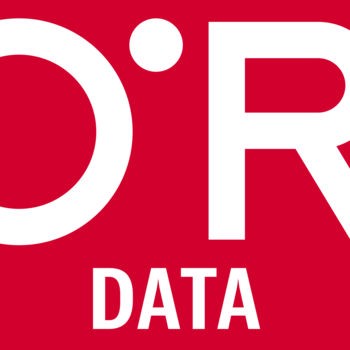Podcasts

The 10 Best AI, Data Science and Machine Learning Podcasts
Learn the basics and keep up with the latest news in data science, machine learning and artificial intelligence by listening to these great podcasts
It seems like AI, data science, machine learning and bots are some of the most discussed topics in tech today. Given my company Fuzzy.ai’s mission to make AI and machine learning more accessible to all developers and product managers, a lot of people ask me about how I keep on top of news in the field.
My preferred way to do this is always through listening to podcasts. Here are the ones I’ve found the most interesting:

The Data Skeptic
A long-time favorite of mine and a great starting point on some of the basics of data science and machine learning. They alternate between great interviews with academics & practitioners and short 10–15 minute episodes where the hosts give a short primer on topics like calculating feature importance, k-means clustering, natural language processing and decision trees, often using analogies related to their pet parrot, Yoshi. This is the only place where you’ll learn about k-means clustering via placement of parrot droppings.Linear Digressions
Hosted by Katie Malone and Ben Jaffe, this weekly podcast covers diverse topics in data science and machine learning: talking about specific concepts like model theft and the cold start problem and how they apply to real-world problems and datasets. They make complex topics accessible.

Talking Machines
Well into its second season, in this podcast, hosts Katherine Gorman and Ryan Adams speak with a guest about their work, and news stories related to machine learning. A great listen.The O’Reilly Data Show
This podcast features Ben Lorica, O’Reilly Media’s Chief Data Scientist speaking with other experts about timely big data and data science topics. It can often get quite technical, but the topics of discussion are always really interesting.

The O’Reilly Bots Podcast
The second O’Reilly entry on this list is one of the newer podcasts on the block. Hosted by Jon Bruner (and sometimes Pete Skomoroch), it focuses specifically on bots and messaging. This is one of the newer and hotter areas in the space, so it’s definitely worth a listen!Concerning AI
Concerning AI offers a different take on artificial intelligence than the other podcasts on this list. Brandon Sanders & Ted Sarvata take a more philosophical look at what AI means for society today and in the future. Exploring the possibilities of artificial super-intelligence can get a little scary at times, but it’s always thought-provoking.

This Week in Machine Learning & AI
Another relatively new podcast, This Week in Machine Learning & AI releases a new episode every other week. Each episode features an interview with a ML/AI expert on a variety of topics. Recent episodes include discussing teaching machines empathy, generating training data, and productizing AI.Data Stories
Data Stories is a little more focused on data visualization than data science, but there is often some interesting overlap between the topics. Every other week, Enrico Bertini and Moritz Stefaner cover diverse topics in data with their guests. Recent episodes about data ethics and looking at data from space are particularly interesting.

Learning Machines 101
Billing itself as “A Gentle Introduction to Artificial Intelligence and Machine Learning”, this podcast can still get quite technical and complex, covering topics like: “How to Catch Spammers using Spectral Clustering” and “How to Enhance Learning Machines with Swarm Intelligence”.Partially Derivative
Hosts Chris Albon, Jonathon Morgan and Vidya Spandana all experienced technologists and data scientists, talk about the latest news in data science over drinks. Listening to Partially Derivative is a great way to keep up on the latest data news.

Even Smart VCs Invest in Cross-Industry Clones
After every disruption, a second wave of startups emerge that adopt similar strategies to transform different industries.
Fast on recognizing the first wave innovators, smart investors are convinced to pour money into cross industry clones to scale disruption across markets.
Dismantling Disruption
Startups are funded on the premise of having a sustainable competitive advantage, that impacts certain components of the value chain so permanently that it changes the rules for a whole industry.
Nearly every major startup success is built on the principle of deflationary economics at certain parts of the value chain. Hence, companies are not disrupted but certain parts of the value chain are.
Digitalization and internet shifts what has traditionally been protected by incumbents, through disassembling the value chain and redesigning its essential distribution channel.
Startups are able to break up business components to isolate opportunities that remain invisible for incumbents when looking at their business as a whole.
As incumbents fail to realize the change in customer behaviour, startups are fast to replicate it in different areas and smart VCs capitalize on the disruption that turns an industry on its head.
Taking advantage of innovation is different than just replicating it. Smart VCs do not invest in video based mobile social networks just because Snapchat is on the rise, or subscription based razor services after hearing about the Dollar Shave Club.
VCs Leverage Disruption
It’s important to spot disruptive trends with an opportunistic mindset before it shakes a whole industry, especially if the hit is coming due to a change in customer behaviour rather than a scientific breakthrough or innovation in the core underlying technology.
Leveraging certain consumer patterns present significant opportunities for startups to compete against the incumbents and create even more effective businesses.
Assuming that customers are the only reason a business exists in the first place, VCs observe the shifts in consumer demand. These VCs aggressively fund companies that are adopting them in previously untouchable industries.
These funded companies are as diverse as education (udemy), hotels (AirBnB), insurance (Oscar) and even government (OpenGov).
Cross Industry Disruption
Investors place their bets in companies that are leveraging newly emerging customer behaviour trends to re-define major industries,
History doesn’t repeat itself but it often rhymes — Mark Twain
Core Business Framework
The business model shift from sales to subscription based economy re-defined the customer behaviour and destabilized every industry. New-age startups fastly adapted this century old model to differentiate from their traditional competitors.
These companies are now shaking clothing (Rent The Runway or Stitch Fix), entertainment (Netflix), music (Spotify) and fitness (Classpass).
Catching the trend early on, Andreessen Horowitz backed subscription companies that are disrupting beauty (Julep), personal care (Walker & Co), vitamins (Nootrobox) and apparel (Le Tote).
A similar business model transformation happened when Google released Adwords and disrupted the ad supported broadcast and print media through providing a free service to its users, in exchange for their data.
Google adapted this strategy throughout its products including Google Analytics, Gmail and Android OS. This business model became the backbone to many of the internet giants, like Facebook, Linkedin and Snapchat.
Sequoia earned good multiples as an early investor in Google and continued investing in the ad and data supported business models with Instagram, Tumblr, Linkedin, Yikyak 🙁 and Whatsapp.
The Art of Business Strategy
Creating a direct-to-consumer channel to bypass the pricey middlemen has been a leading business strategy since the early days of the internet. Targeting the customer directly, startups are able to provide better service and experience at a much lower price to create a loyal customer base.
This disintermediation gave birth to big companies in health (Zocdoc), organic clothing (MORI), general clothing (Bonobos), personal care (Harry’s) and banking (Atom).
Forerunner was bullish on direct-to-consumer model since its inception with more than 50 (!) portfolio companies that are targeting almost every single industry from luggage (Away) to outdoor apparel (Cotopaxi).
The marketplace model is more than 20 years old, started with ultra successful early examples like Amazon and Ebay.
Since then, startups tried to apply the model to real estate (RealtyShares), funding (Kickstarter), lending (Lendingclub) and even science (Science Exchange) — all backed by Union Square Ventures.
The rise of mobile gave birth to the on-demand economy reinventing the customer expectations for transportation (lyft), delivery (Postmates), labor (TaskRabbit) and travel (Airbnb): not surprisingly all funded by Founders Fund.
Similarly the bottoms up sales approach, business to developer tools (and open source) and migrating to cloud have all been experimented by startups targeting different sectors.
Remodeling the Customer Interaction
Interface disruption occurs as new consumer interaction mediums emerge with progresses in technology and new businesses adapt the new UI to meet the growing demand.
The early mobile first startups disrupted the first generation technology companies in the financial sector (Robinhood), payments (Braintree), language (Duolingo) and business tools (Evernote) as the first-movers in the newly created medium.
NEA caught the wave early on and backed many of the successful mobile-first companies including before mentioned examples.
The explosion of usage in chat services proved customer adaptation to conversational UI and was immediately applied to transform other verticles.
In came newcomers like Slack, GoButler, Digit and Intercom. General Catalyst, Boost VC and Accel Partners already placed a number of bets across different industries in the conversational interface.
Lastly, Facebook (Messenger, Instagram and Whatsapp) is not the only company mimicking Snapchat’s success with bringing video into everyday use.
Videolicious (sales), JobToday (recruitment), Joyus (commerce) and House Party (chat) emerged differentiating their offering through live streaming and video features. Similar market wide trends emerge with public adoption in VR and AR technologies.
Capitalizing on Customer Expectations
Changes in customer behaviour due to business model, business strategy and user interface disruptions do not require deep technical expertise to adapt and experiment.
Smart entrepreneurs catch these trends and simulate them in different areas while incumbents fail to meet the new customer demand and their grounds start shaking.
Smart investors spot the disruptions in the key components of the value chain that re-define the customer expectations and capitalize on it across industries.

The loathsome state of my inbox
There’s only one way cold email works for B2B, and it’s not what you think
In this waning-pandemic era, my morning routine has been optimized to the hilt. I wake, scrunch my hair into a bun, throw on leggings and a t-shirt, and grab some coffee. It takes about five minutes — and that includes 2.5 minutes for the pour-over. (My daughter doesn’t even move from her prone position in bed; she just grabs her laptop from her night table and starts her day. My husband is a huge fan of the “hide-the-bottoms” strategy and lives in jogging pants paired with nice-ish shirts. We are all Olympians here).
It’s a good thing too, because all that time I’ve saved preening gets frittered away once I open my email. I gingerly take my post-surgery carpal tunnel hand and click-click-click-click-click my way down the inbox to delete all the cold emails that have come in overnight. By the time I’m done, I have about four emails that actually need my attention. And that’s how my morning starts.
It goes without saying that this is my Primary inbox, and I’m only dealing with the cold emails that have slipped through Google’s fingers and avoided the graveyard of the Promotions folder.
What’s become of B2B email? Like the boy who cried wolf, repeated requests for meetings and responses have become meaningless and the end result is simply a form of cognitive load that’s useful to no one.
In Copper’s recent Shifting Relationships survey, we identified that during the pandemic the number of cold emails sent increased substantially, while the response rate got worse or stayed the same. The cold email response rate is — and has been for some time — one percent, and is only showing signs of getting worse. Yet marketers continue to throw repeated missives everyone’s way, not because they think they’ll drive fantastic response rates, but because email is cheap and they’ll continue to play for the one percent. And that one percent will only yield more responses by sending out more emails, so we continue down this silly path that bloats our inboxes. At best, it’s annoying and a waste of time; at worst, it does the opposite of what was intended and damages the way we perceive brands.
The most objectionable part of the cold-email barrage is the phony personalization that’s become the tactic de rigeur. First of all, the data is wrong more often than it’s right. Second of all, the inauthenticity of faking a relationship with someone you’ve never is met extremely off-putting. Some growth marketer had a taste of success with this strategy 10 years ago; brands now wage a constant battle with one another to come up with new ways of pretending to actually know someone.
You’re getting it all wrong … and it’s embarrassing
“More than half the time we’re showing ads to someone other than the advertiser’s intended audience,” said a Facebook product manager in 2016. If Facebook can’t figure out personalization with their troves of first-party data, I highly doubt that smaller brand marketers, who are typically buying lead lists and attempting to enrich them with third-party data, are doing any better in their cold email attempts.
Julia from Ju***tor* recently emailed me multiple times with this winner:
“Hey Carrie — I know you’re busy, so I thought I’d reach out to you as well as Jason D. & Brooke H. again…”
Jason is not and has never been an employee of Copper. He’s the founder of Copper LLC — a totally different company. Brooke left the organization in March. Well done Julia. (PS: saying “I know you’re busy” is like saying “I know you breathe air.” But at least you spelled “you’re” correctly.)
I received an Inmail this morning with the salutation: Hi Kelley… The sender followed it up with another Inmail a few minutes later apologizing for the “typo” and saying he wasn’t sure quite how it happened. I could forgive him if I didn’t know that the sender had nothing to do with the composition of either the note or the correction. The mistake was on the part of the marketer who forgot to insert the firstname merge field.
One of my all-time favourite fails was a cold email addressed to “Dennis Dennis.” The copy indicated that the sender knew Dennis Dennis didn’t have the decision-making power in the organization, but hopefully he could forward it to someone who did? Dennis (last name not Dennis) is Copper’s CEO. And the sender? None other than the supposed “top” prospect-enrichment database.
You don’t know me. Stop pretending you do.
The worst offenders are the ones who pretend that we already have a relationship. The falsehood achieves two things: 1) it makes them think it’s ok to email me repeatedly even though I never respond and 2) it makes them think I owe them something.
This morning I got a blind LinkedIn connection request and the note read: “Putting a face to the name.” The strategy was to give me a photo of Nikki to match the dozens of cold emails she’s sent me over the last few weeks — none of which I’ve opened. Frankly I didn’t even recognize the name, just the tactic.
Kevin from Re***ze wrote me and said, “Hey Carrie, I hope everything is ok. I haven’t had any luck reaching you. So I’m going to assume one of three things:” He then went on to list three incorrect assumptions about me and had the audacity to ask me to take time out of my day to respond to which of the incorrect assumptions fit me most. Kevin hasn’t had any luck reaching me because he is as known to me as someone who lives 3000 miles away whom I’ve never seen in my life. Why would I respond? Why is he asking me for favors?
Monica tried to trick me and others on my team. Her subject line was “Weekly top lead: $56k budget, specialty contractor in California,” and the body of the email was designed to look just like the triggered notifications I get from our marketing automation platform. She called herself my account representative. But no, Monica, I’m not your customer and now I never will be.
Honestly. I could mark these as spam. I could “unsubscribe” from things I never subscribed to. I could respond and tell these people that no, I did not “get your voicemail,” and actually no, I am not going to “recommend the best person to talk to” and no, I don’t want a “box of chocolates in return for my time” (well, I do, but not from you). But why should I have to? Why should I spend precious minutes and flex regenerating wrist muscles to muck around with inbox settings and filters and spam reporting? Besides, I’d never be able to stay on top of it. No matter how many times I try to clean my inbox or put my promotions folder to work, it just fills with junk again — in half the time it took to sweep it.
The only way cold email works
Now, I’m a marketer by trade. And I’m a marketer with a large responsibility to drive top- and mid-funnel action for my organization. So I truly, truly understand where all these emails are coming from and why they all seem to be headed my way.
But they totally miss the mark. For years, no matter how many cold emails have been sent, the average response rate has never improved beyond one percent. And there’s a simple reason for that.
Cold email only works when two very specific criteria are met:
- You have to already be feeling the pain being expressed by the sender
- You have to be feeling the pain right now
Timing and pain.
The rare combination of those two conditions is what elicits a response. That’s it, that’s all. Here’s an example of an email to which I did respond:
Good Afternoon Carrie — Hope all is well!
I was checking out your LinkedIn and it looks like you are owning marketing over at Copper!
At In***ight, we are currently running demand gen programs with K***x and they are seeing some great results with us! In one quarter, K***x generated over $250K in pipeline opps with our program. (attached is the case study)
Any interest in connecting? I can show you what we are doing for our clients like K***x and how we can support your Q3 initiatives at Copper.
Kind Regards,
Jason
I could quibble with the excessive exclamation marks and the fact that K***x isn’t a brand I’m familiar with, nor is it relevant to me. But Jason caught me at a time when I was absolutely feeling the pain of slow pipeline and I was already thinking about potential third-party sources to beef up volume.
Ultimately I did connect with Jason, and while I didn’t become a customer, I at least became a legitimate, qualified lead.
I was feeling the pain, and I was feeling the pain right then.
This is what brands should be doing with cold email. Dispense with all the gimmicks and the guilt and the favors and the FOMO and the spurious personalization and just say: “Hey. Here is the pain point we solve. If you are feeling this pain we can help.” And that’s all they have to do. A sequence is ok if it’s not too frequent, because all a sequence does is try to get the timing right. But after 3 emails, spaced out perhaps a couple of weeks or a month apart, it’s safe to scrub that person from your list if you haven’t received a response.
In fact, I kind of wish our friends at Google would create a digest of cold emails for me, once a week. They’d wrangle all the cold emails, parse the content, and send me a simple list of all of the brands that want to reach me, the pain points they’re solving, and a sentence or two about their solution. I could glance at this, hand pick the relevant ones, and follow up on my own.
Problem solved. No inbox bloat, no reputation damage, no risk of carpal tunnel recurrence.
I wonder if Dennis Dennis would agree.
*All names changed and brands redacted for privacy
- Whitepaper Sources
- How Big Data can Change Our Lives?
- How Technology can help Venture Capitalists?
- Growth and Scale for Companies
- Global conference for Startups
- Startup Entrepreneurship

The 10 Best AI, Data Science and Machine Learning Podcasts
Learn the basics and keep up with the latest news in data science, machine learning and artificial intelligence by listening to these great podcasts
It seems like AI, data science, machine learning and bots are some of the most discussed topics in tech today. Given my company Fuzzy.ai’s mission to make AI and machine learning more accessible to all developers and product managers, a lot of people ask me about how I keep on top of news in the field.
My preferred way to do this is always through listening to podcasts. Here are the ones I’ve found the most interesting:
About Kenneth Cukier's TED Talk
What's the future of technology and design that's driven by Big Data? Kenneth Cukier of the Economist looks at what's next for machine learning and human knowledge.
About Kenneth Cukier
Kenneth Cukier is the Data Editor of The Economist. From 2007 to 2012, he was the Tokyo correspondent, and before that, the paper's technology correspondent in London, where his work focused on innovation, intellectual property and Internet governance. Kenneth is also the co-author of Big Data: A Revolution That Will Transform How We Live, Work, and Think.

Even Smart VCs Invest in Cross-Industry Clones
After every disruption, a second wave of startups emerge that adopt similar strategies to transform different industries.
Fast on recognizing the first wave innovators, smart investors are convinced to pour money into cross industry clones to scale disruption across markets.

The loathsome state of my inbox
There’s only one way cold email works for B2B, and it’s not what you think
In this waning-pandemic era, my morning routine has been optimized to the hilt. I wake, scrunch my hair into a bun, throw on leggings and a t-shirt, and grab some coffee. It takes about five minutes — and that includes 2.5 minutes for the pour-over. (My daughter doesn’t even move from her prone position in bed; she just grabs her laptop from her night table and starts her day. My husband is a huge fan of the “hide-the-bottoms” strategy and lives in jogging pants paired with nice-ish shirts. We are all Olympians here).

How we benefit from the Startup Grind Membership: Animal ID
“It’s a great community of startup founders, mentors, and investors from all over the world that gives to its members the knowledge, inspiration, experiences, and a lot of useful connections!”
This is how Vasyl Dub, founder of Animal ID describes Startup Grind. Startup Grind’s relationship with Vasyl and Animal ID goes back to the 2020 Global Conference. Animal ID was an exhibiting startup at the conference and in-fact that was where they first met with one of their current investors!